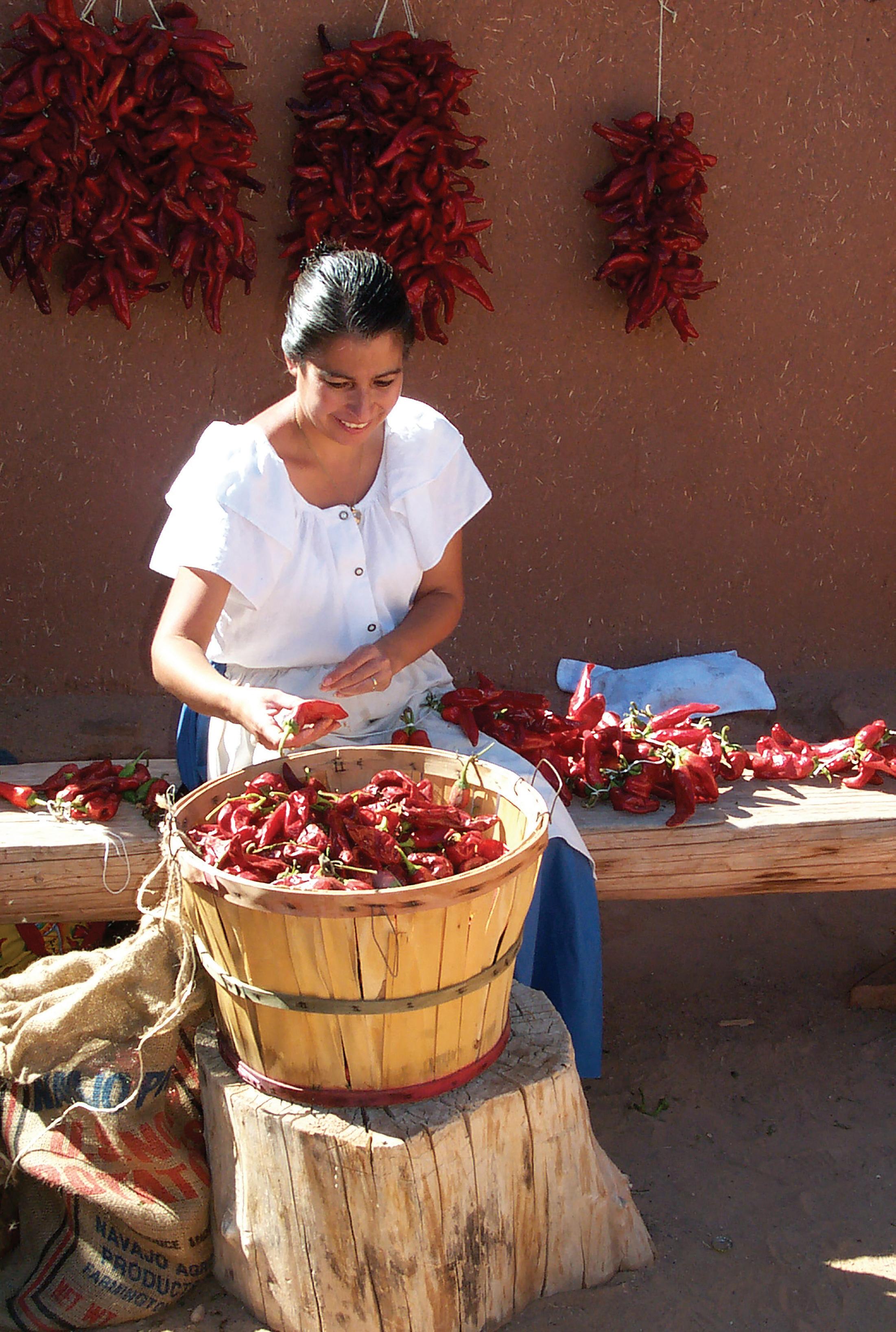
2 minute read
Goats do Roam: Goatscaping in Santa Fe
Meet Muenster and her twin sister, Mozzarella. Over there are their kids—Parmesan, Provolone, and Pepper Jack—and Feta’s kid, Pecorino Romano. You could also get acquainted with Apples, Flower Ears, or Onyx. They might ignore you, though— hired for the annual cleanup of the Santa Fe Railyard, they’re busy munching weeds and grasses. They’re members of the 65-goat crew belonging to Horned Locust GoatScaping, which for 17 years has been using goats to clear commercial and residential landscapes in the Santa Fe area.
Their owner, Amanita Thorp, grew up with goats on her family’s homestead in Santa Fe County. Her small herd of a few dozen dairy goats grew to about 250 goats when a large Army Corp of Engineers remediation project to remove tamarisks on the Galisteo Dam began, in 2006. When that project ended, in 2010, they began working for the Eldorado Community Improvement Association to graze back thriving, monsoon-nourished weeds as a defense against wildfires. Today, the herd comprises some 150 goats and sheep; the main herd that commutes daily is 65–75 strong, depending on the scope of the job. The goats arrive at the job site in a livestock trailer, then do their job of eating weeds inside a traveling electric fence. On day trips, they’re accompanied by a herding dog and a companion dog; for longer jobs, Thorp, her husband Tom Berto, and their young daughter camp on-site and bring along the entire herd, the dogs, and a horse or two.
Goats are extremely versatile eaters, and the Horned Locust herd has learned to consume a variety of plants throughout the year. A free-range diet of vegetation is supplemented with hay and minerals to meet their basic nutritional needs, after which they can eat as much as they like from a smorgasbord of weeds, shrubs, grasses, and seeds. They especially appreciate prickly-pear fruit, and yucca pods and blossoms—what becomes clear in talking with Amanita Thorp is that each goat has individual preferences and a distinctive personality.
Photos: © Esha Chiocchio.

About those names—Thorp keeps track of her individual goats by using alphabetically coded names and themed families, using as a naming convention the dairy industry’s system of tattooed letters in the goats’ ears. This year the letters were O and P, with a number of kids born into the “cheese” family—hence the charming cheese platter mentioned above.
A good monsoon season usually means lots of weeds. However, because the dry periods our region experiences create occasional slow times for the herd, Thorp and her husband also wrangle animals for New Mexico’s robust and apparently evergreen film industry. Still, they prefer the quality of life afforded by goatscaping together as a family. They clear private yards, city parks, farmland, HOA land, utilities, and solar farms. The results are multifold: regenerated soil, and land opened to reduce fire fuel and create more defensible spaces in fire season—as well as reduced cover for rodents and noxious or invasive weeds, and the promotion of seed germination. It all makes the land more fertile and resilient without using machines or pesticides. More than anything, Thorp and Berto see the importance of children watching animals interact with the environment. The antics and personalities of their herd of goats make the process of education for everyone that much easier.
—Mara Christian Harris
Horned Locust GoatScaping NM Film Animals LLC 505.470.8741 nmfilmanimals@gmail.com









